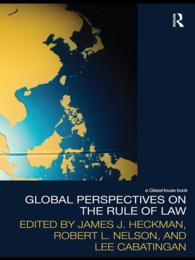Description
The Three Functional States of Proteins explores how structured proteins, intrinsically disordered proteins, and phase separated proteins contribute to the complexity of cellular life, and offers insights into their roles in both health and disease. It discusses the latest research findings and highlight groundbreaking discoveries and innovative methodologies used to study these protein states. Traditionally, the different states of proteins have been defined based on their structures and functions. However, it is becoming increasingly clear that these criteria alone may not be sufficient to capture the complex and multifaceted properties of these molecules. Definitions based on thermodynamics and kinetics are now recognized as potentially more appropriate for comprehensively understanding protein states. Emerging evidence indicates that under physiological conditions, a majority of proteins possess the capability to exist in and transition between the native, droplet, and amyloid states. These distinct states play crucial roles in various cellular functions, influenced significantly by their physicochemical and structural properties. The book also considers the interactions among these states and discusses how their internal organization as individual molecules, as well as their collective organization as molecular assemblies are stabilized. Furthermore, it examines the processes by which these states are formed and the cellular functions associated with each specific state.- The book serves as an introduction to a unique volume that provides comprehensive coverage of these three functional states of proteins- The chapters are written by leading global scientists who are actively engaged in research on these specific protein states- It presents a broad picture of the current, emerging, and evolving research on these protein states- Given that this book comprehensively addresses both foundational concepts and recent advancements in the field, it will appeal a broad spectrum of readers from various academic disciplines
Table of Contents
1. The three functional states of proteins: Beyond the classical "lock-and-key" paradigm2. Ordered proteins and structure-function relationship: Classical view3. Binding of a substrate ("lock and key") and conformational adaption ("induced fit") are different stages of enzyme action4. Intrinsically disordered proteins: Functionality of chaos5. Protein Conformation-based Phenotypic Switching and Implications in the Origin and Evolution of Multicellularity6. Hybrid proteins: Fusion chimeras and natural wonders7. Functional protein oligomers8. Fuzzy complexes9. SMARTQ: Single Molecule Amyloid fibRil Tracking and Quantification. A method for accurately imaging, tracking and quantifying the growth of individual amyloid fibrils using TIRF10. Structural Polymorphism in Amyloids – States within Proteins' Solid-State11. Liquid-Liquid Phase Separation, Biomolecular Condensates and Membraneless Organelles: A Novel Blueprint of Intracellular Organization12. Physical principles and molecular interactions underlying protein phase separation13. Various levels of phase transitions in the protein universe14. Targeting phase-separated protein states for drug discovery15. Protein hydrogels: Structure, Characteristics, and Applications16. Interactions among the three protein states17. Protein frustration and fuzziness in the three functional states18. Thermoresponsive intrinsically disordered protein polymers19. The evolution and exploration of intrinsically disordered and phase-separated protein states20. Computational modelling of intrinsically disordered and phase separated protein states21. Molecular dynamics simulations of intrinsically disordered, fuzzy complexes, and phase separated protein states22. Biological complexity of the phase separated protein states23. Protein structure-function continuum
-

- 電子書籍
- 名探偵コナン歴史まんが 日本史探偵コナ…
-

- 電子書籍
- 健康で文化的な最低限度の生活(8) ビ…
-

- 洋書電子書籍
-
法の支配:国際的考察
Globa…
-

- 電子書籍
- 月刊 むしろ、謎の大阪ギャラクシー。 …




